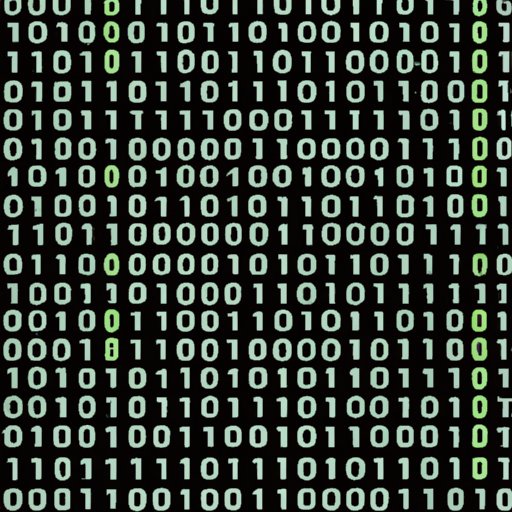Introduction
Have you ever wondered how many bits are in a hexadecimal number? Whether you are a computer science enthusiast or simply curious about the hexadecimal number system, this article will explain everything you need to know. From understanding the basics of hexadecimal to exploring its practical applications in computer programming, we will cover it all.
Understanding Hexadecimal: The Number of Bits Explained!
Before we delve into the number of bits in a hexadecimal system, let us first understand what it is. The hexadecimal number system is a base-16 number system that uses 16 digits to represent numbers. These digits range from 0 to 9, followed by letters A to F, where A represents 10, B represents 11, and so on.
In hexadecimal, each digit is represented by a certain number of bits. Specifically, there are 4 bits in each digit of a hexadecimal number. This means that each digit can have sixteen different values, ranging from 0000 (0 in decimal) to 1111 (15 in decimal).
For example, the hexadecimal number 3A would be represented as 0011 1010 in binary, with each digit (3 and A) consisting of four bits.
A Quick Guide to Counting the Bits in a Hexadecimal Number
If you are new to the world of hexadecimal, counting the number of bits in a hexadecimal number can seem daunting. However, it is actually quite simple with a little bit of guidance. Here is a step-by-step guide you can follow:
- Write out the hexadecimal number you want to analyze. For example, let us use the number 5C.
- Convert each digit of the hexadecimal number to binary. In our example, 5 would be 0101 in binary and C would be 1100 in binary.
- Count the total number of bits. In our example, 5C would have a total of 8 bits (4 bits for 5 and 4 bits for C).
By following these steps, you can quickly and easily count the number of bits in any hexadecimal number.
Why Hexadecimals Have 4 Bits Per Digit
The use of 4 bits per digit in hexadecimal may seem arbitrary, but there is actually a logical reason for it. Hexadecimal numbers were first used in computer science as a way to represent binary numbers in a more compact form. Since 4 bits can represent 16 values (from 0 to 15), each digit of a hexadecimal number can be used to represent a single nibble (a nibble is a group of 4 bits).
This made hexadecimal a much more convenient way to represent binary numbers, especially when dealing with large amounts of data. For example, the binary number 11010100110101 would be much more efficient to represent as the hexadecimal number D35, which is 3 digits instead of 14.
Hexadecimal vs. Binary: Which is Better?
So, which is better: hexadecimal or binary? The answer depends on what you are using the number system for. Binary is the most basic number system in computer science, consisting of only 0s and 1s. While it can be tedious to work with, it is often necessary when dealing with low-level programming or working with hardware.
Hexadecimal, on the other hand, is more convenient to work with when dealing with larger values. It is also easier to read and write than binary, especially when dealing with long strings of numbers.
Both hexadecimal and binary have their pros and cons, and the choice of which system to use ultimately depends on the situation.
How Hexadecimal is Used in Computer Programming
Hexadecimal is widely used in computer programming, both in high-level languages like Java and in low-level languages like assembly code. One of the main uses of hexadecimal in programming is to represent memory addresses.
Memory addresses are represented in hexadecimal because they are typically quite large and difficult to read and write in decimal or binary. By using hexadecimal, developers can read and write memory addresses more easily. Hexadecimal is also used to represent colors in many programming languages, including HTML and CSS.
In programming, each digit of a hexadecimal number is represented by 4 bits, just like in the standard hexadecimal system. This means that a single byte (8 bits) can be represented by two hexadecimal digits.
Conclusion
In conclusion, hexadecimals have 4 bits per digit, making them a convenient and efficient way to represent binary numbers in computer science. While binary is more basic and useful in certain situations, hexadecimal is often more convenient to work with when dealing with higher values or large amounts of data.
